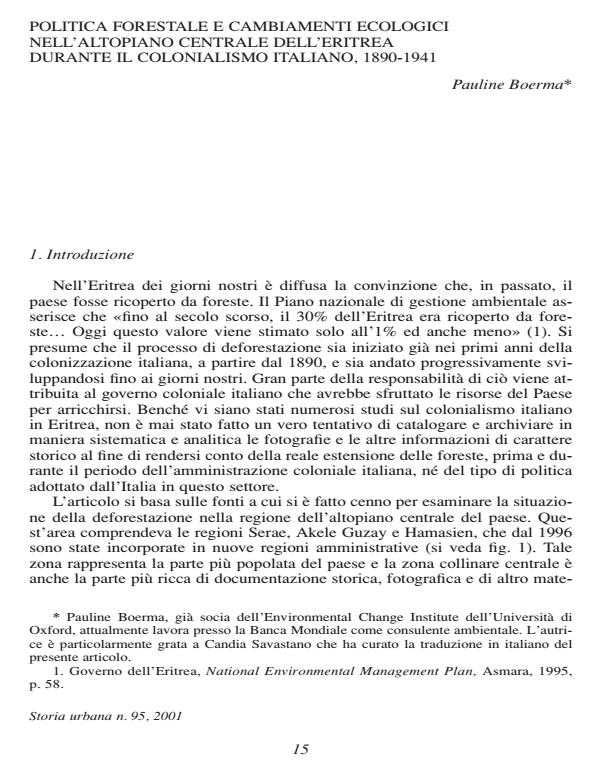Politica forestale e cambiamenti ecologici nell'altopiano centrale dell'Eritrea durante il colonialismo italiano 1890-1941
Journal title STORIA URBANA
Author/s Pauline Boerma
Publishing Year 2002 Issue 2001/95
Language Italian Pages 30 P. File size 100 KB
DOI
DOI is like a bar code for intellectual property: to have more infomation
click here
Below, you can see the article first page
If you want to buy this article in PDF format, you can do it, following the instructions to buy download credits

FrancoAngeli is member of Publishers International Linking Association, Inc (PILA), a not-for-profit association which run the CrossRef service enabling links to and from online scholarly content.
A variety of archival, photographic and other historical information suggests that the central highlands of Eritrea were not, in fact, densely forested at the start of the Italian colonial period in 1890. Furthermore, while there is evidence that in a few specific areas, such as the eastern escarpment, extensive deforestation did occur during the Italian colonial period, tree cover does not appear to have deteriorated significantly in the rest of the central highlands. Although there were periods in which the Italians sanctioned intensive use of wood as fuel, the colonial administration was however careful in its conservation of trees, passing extensive legislation, importing most of its timber needs and conducting widespread tree planting campaigns. Where damage to woodlands did indeed occur, it appears not to have been the result of a conscious strategy to exploit the timber, but rather of a poor diagnosis of the main causes of deforestation in the early years of colonial administration, as well as ineptness in the enforcement of legislation during other periods.
Pauline Boerma, Politica forestale e cambiamenti ecologici nell'altopiano centrale dell'Eritrea durante il colonialismo italiano 1890-1941 in "STORIA URBANA " 95/2001, pp , DOI: